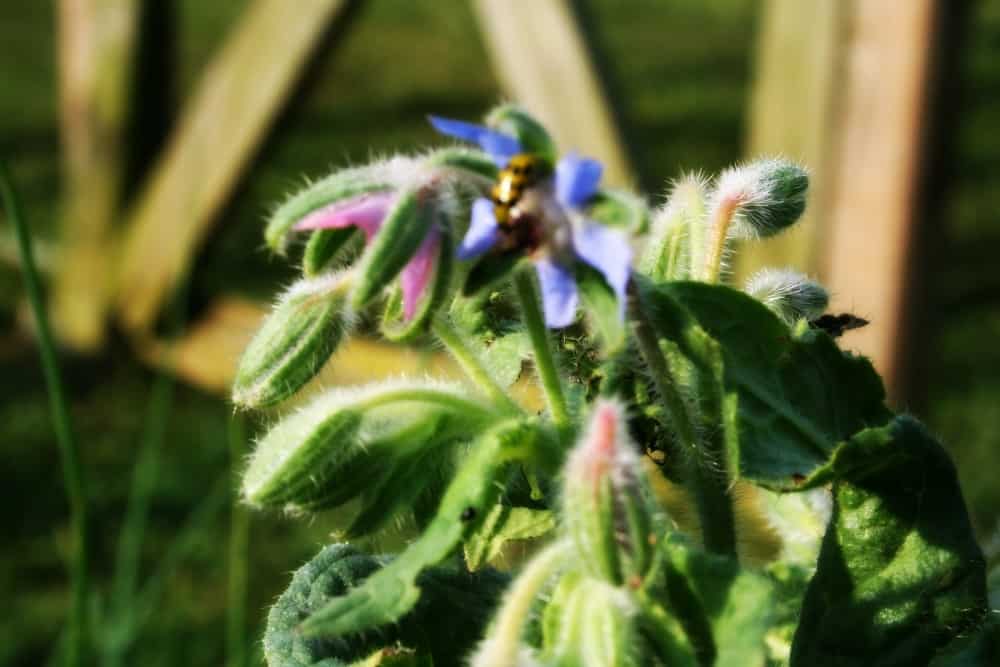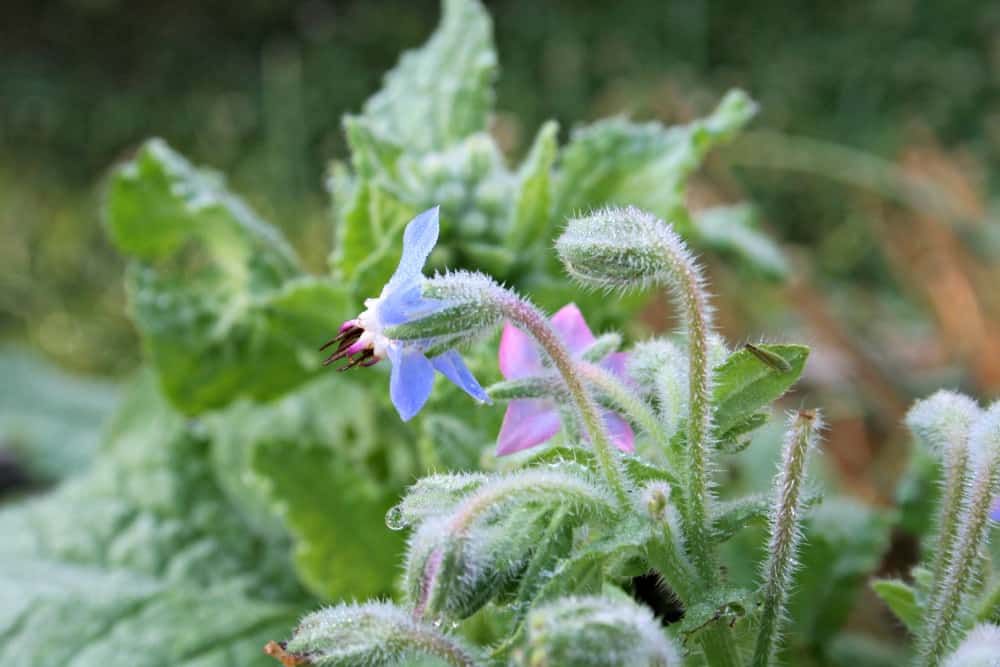Have you ever heard of the herb, borage? If you haven’t, you aren’t alone. Most 21st century Americans have never heard of this plant. But if you had lived 100 or 200 or more years ago, borage would have been as common as a head of iceberg lettuce.

What Is Borage?
Borage (Borago officinalis) is an annual herb from the Mediterranean. It grows to about one to two feet in height with thick, broad leaves covered in fine hairs, and stems with small hairs that can grow quite coarse and heavy.
The flowers are lovely blue and purple star-shaped adornments crowning the top of the herb. These are the jewels of borage, and why many gardeners grow the plant.
This herb self-seeds very easily, so plant it where you won’t mind it growing back year after year. You can direct sow the seeds into the garden. They germinate readily.
Uses
Throughout history, borage was the poor man’s friend. It was easy to grow and had many uses.
The borage herb leaves were cooked into soups, stews, and everything in between. The flowers are also edible and beautiful to add to salads. Most cookbooks say the flowers taste like cucumber, but it’s a bit sharper, more mineral-tasting than cucumber. Pleasant, but different.
Cultural Popularity
The herb is popular in Germany, Lithuania, Spain, some parts of Italy, and the U.K. Both the herb borage leaves and flowers are edible and used in a variety of dishes. In Germany, a special ‘green sauce’ is made from the leaves. Soups included the leaves, potatoes and onions are also found in many German, Lithuanian and UK cookbooks.

The flowers are especially delightful with a taste that is sweet, like honey. Perhaps this is why the flowers attract so many pollinating insects! They are often added to lemonade both for the beautiful juxtaposition of yellow beverage and purple flowers and the sweet taste the flowers add.
And yes, borage was once the garnish for an alcoholic drink — a Pimm’s cocktail. Nowadays, a piece of cucumber is often used, but borage was the original garnish.
Throughout history, monastery gardens and kitchen gardens everywhere had a few borage plants tucked in to the garden beds. The plant is also called bee bread, bugloss, and many other terms related to insects and bees, a hint at its ability to attract plenty of pollinators.
Natural Insect Control
Another great attribute of this plant is its ability to keep bad bugs away from plants you want to grow. I tucked eggplants under the shelter of borage leaves and found that the eggplants growing directly next to the borage aren’t troubled by the Colorado potato beetle, but those a little farther away are. Like marigolds and companion planting, folklore has it that the plant repels may bad insects including tomato hornworn.
Whatever your reason for growing this herb, borage is a pleasure to behold, a pleasure to grow, and a pleasure to eat.




